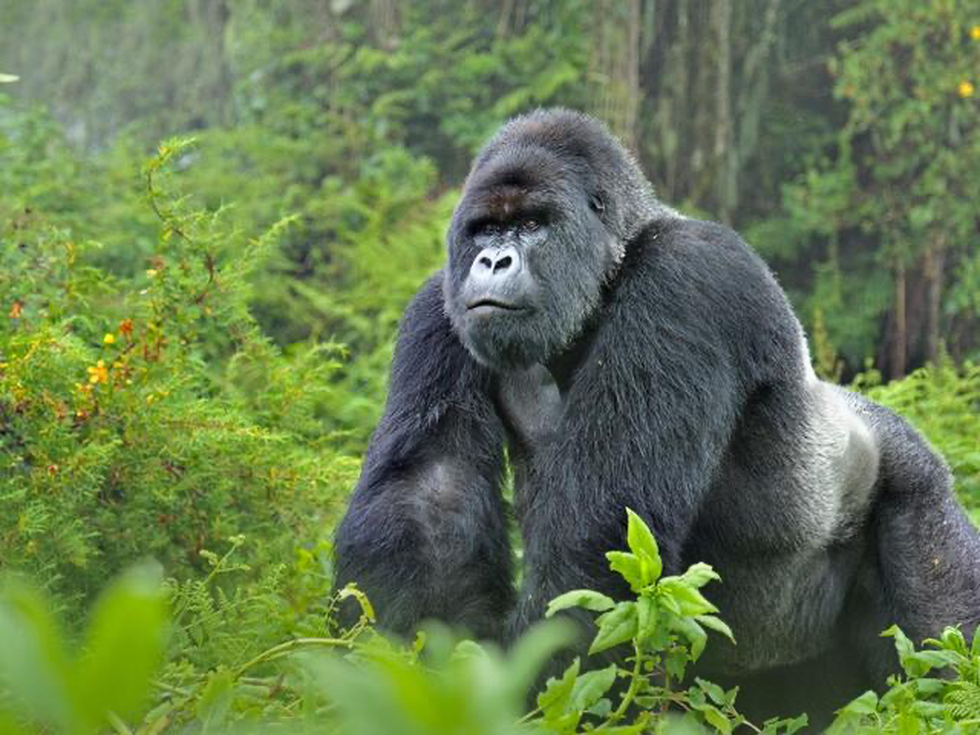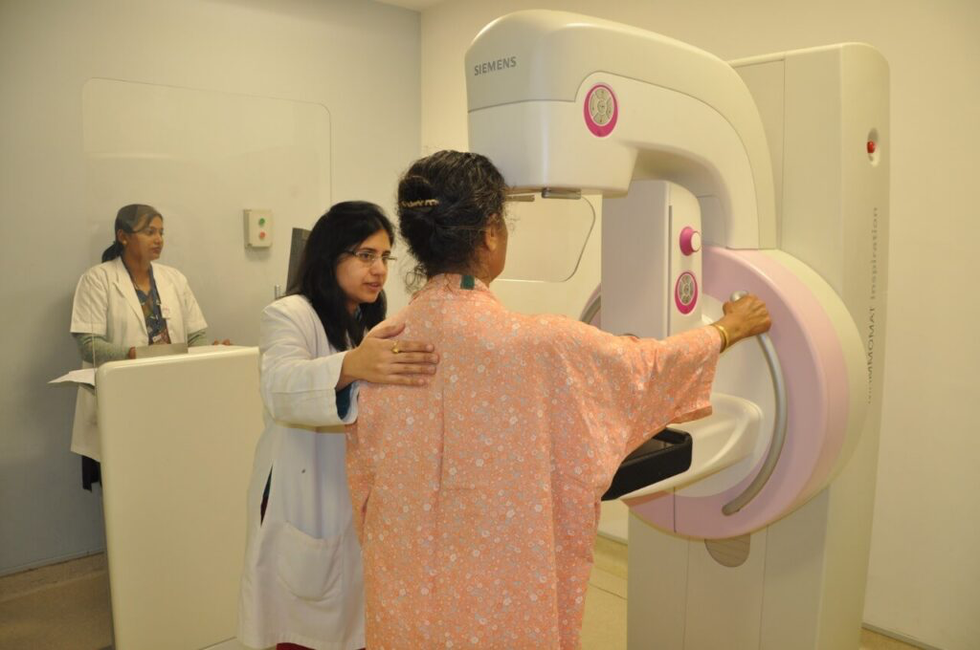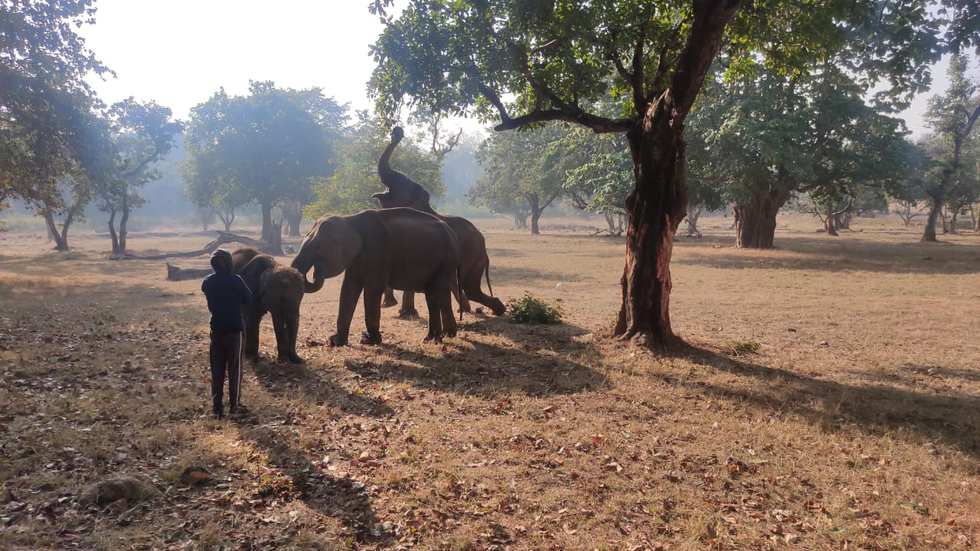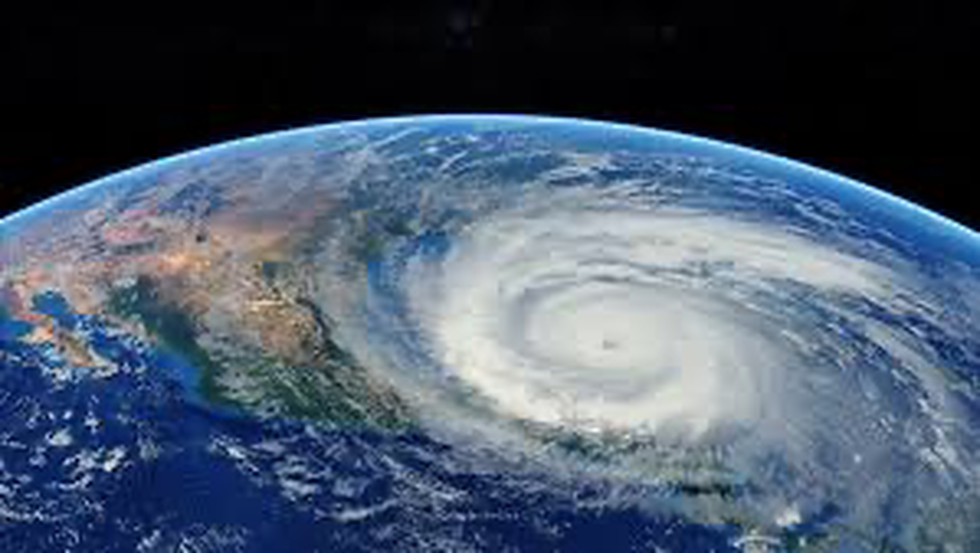
About Gopalpur Port:
- It is a deep-draft, multi-cargo port located on the east coast of India in the mineral-rich state of Odisha.
- It lies between Paradip Port in the north and Visakhapatnam Port in the south, at almost equal distance from each.
- The hinterland of the port is the states of Odisha, Jharkhand, and Chhattisgarh, thus providing access to a mix of minerals, steel, aluminium, cement and power plants.
- The coal fields of IB and Talcher, which account for approximately 25% of India’s coal reserves, form part of the hinterland of the port.
- Connectivity:
- The broad-gauge Howrah-Visakhapatnam-Chennai east coast trunk route, which runs parallel to the east coastline, is just 6 km away from the Gopalpur port site.
- Close proximity to NH5 (Kolkata-Chennai) provides excellent road connectivity to and from Gopalpur.
2. Gorillas

About Gorillas:
- Gorillas are the largest of the great apes (there are 5 species of great apes, including, gorilla, orangutan, chimpanzee, bonobo and human).
- Gorillas share 98.3% of their genetic code with humans, making them our closest cousins after chimpanzees and bonobos.
- Gorillas and humans shared a common ancestor about 10 million years ago.
- There are two gorilla species in the world: the eastern gorilla and the western gorilla. The mountain gorilla is a subspecies of the eastern gorilla.
- Distribution:
- Gorillas live only in tropical forests of equatorial Africa.
- Eastern gorillas live in the Democratic Republic of the Congo (DRC), Uganda, and Rwanda.
- Western gorillas, meanwhile, can be found in Nigeria, Cameroon, the Central African Republic, Equatorial Guinea, Gabon, the Republic of Congo, Angola, and the DRC.
Features:
- They are large powerful animals with strong prominent chests and shoulders.
- Males are about twice as heavy as females and may attain a height of about 1.7 metres and weight (in the wild) of 135–220 kg.
- They have large, human-like hands with muscular arms that are longer than their legs.
- They have dark skin and black to brown-grey hair.
- Males acquire silver-gray saddles across their backs and upper thighs at sexual maturity, earning them the name Silverback.
- The face has large nostrils, small ears, and prominent brow ridges.
- They live in family groups of usually five to ten. The groups are polygamous, with one adult silverback gorilla, leading the troop and mating with the female members.
- They are active during the day (diurnal) and primarily terrestrial, usually walking about on all four limbs with part of their weight supported on the knuckles of their hands. This mode of locomotion, called knuckle-walking, is shared with chimpanzees.
- Their diet is vegetarian.
- Conservation Status:
- IUCN Red List: Both the eastern gorilla and the western gorilla are classified as ‘Critically Endangered’ under the IUCN Red List.
3. Mammography

About Mammography:
- It is an X-ray imaging method used to examine the breast for the early detection of cancer and other breast diseases.
- Healthcare providers use mammograms, or mammography, to look for early signs of breast cancer before symptoms develop. This is called a screening mammogram.
- Providers also use mammography to look for any abnormalities if you develop a new symptom, such as a lump, pain, nipple discharge, or breast skin changes. This is called a diagnostic mammogram.
- How does it work?
- During a mammogram, a patient’s breast is placed on a flat support plate and compressed with a parallel plate called a paddle.
- An X-ray machine produces a small burst of X-rays that pass through the breast to a detector located on the opposite side.
- The detector can be either a photographic film plate, which captures the x-ray image on film, or a solid-state detector, which transmits electronic signals to a computer to form a digital image.
- The images produced are called mammograms.
- On a film mammogram, low-density tissues, such as fat, appear translucent (i.e. darker shades of gray approaching the black background), whereas areas of dense tissue, such as connective and glandular tissue or tumors, appear whiter on a gray background.
- These high-density regions could represent many different types of abnormalities, including cancerous tumors, non-cancerous masses called benign tumors, fibroadenomas, or complex cysts.
4. Palamau Tiger Reserve

About Palamau Tiger Reserve:
- Location: It is located on the western part of the Chotanagpur plateau in Jharkhand.
- The reserve forms part of the Betla National Park.
- It is one of the first nine tiger reserves created in the country at the inception of ‘Project Tiger’.
- It is the first reserve in the world in which a tiger census was carried out as a pugmark count as early as 1932 under the supervision of J.W. Nicholson.
- Three rivers, namely North Koyal, Auranga, and Burha, flow through the valleys.
- The geological formation consists of gneiss and includes granite and limestone.
- The reserve is very rich in minerals like Bauxite and Coal.
- Vegetation:
- It is primarily dominated by the Northern Tropical Dry Deciduous, Sal Forest and its associates.
- Smaller patches of Northern tropical Moist Deciduous forests exist too in the Reserve.
- Flora: Shorea robusta, Acacia catechu, Madhuca indica, Terminalia tomentosa, Butea monosperma, Pterocarpus marsupium, Anogeisus latifolia, Indigofera pulchela, etc.
- Fauna: The keystone species are Tigers, Elephants, Leopards, Grey Wolf, Gaur, Sloth Bear, Four-horned Antelope, Indian Ratel, Indian Otter, and Indian Pangolin.
5. Nidhi Companies

About Nidhi Companies:
- A NIDHI Company is recognised under Section 406 of the Companies Act 2013 and typically operates in the Non-Banking Financing Sector of India.
- It is formed to borrow and lend money to its members. It inculcates the habit of saving among its members and works on the principle of mutual benefit.
- It is not required to receive the license from the Reserve Bank of India (RBI), as these are registered with the Companies Act.
- Members: A minimum of seven members is required to start a Nidhi Company out of which three members must be the directors of the company.
- Activities Prohibited in a Nidhi Company
- It can’t deal with chit funds, hire-purchase finance, leasing finance, insurance or securities business.
- It is strictly prohibited from accepting deposits from or lending funds to, any other person except members.
- Nidhi companies should not issue preference shares, debentures or any other debt instrument in any manner, name or form.
- Nidhi companies should not open current accounts with their members.
6. Tropical Cyclone

About Tropical Cyclone:
- It is a rapidly rotating storm originating over warm tropical oceans from where it draws the energy to develop.
- How it is formed?
- A tropical cyclone is formed only over warm ocean waters near the equator.
- Warm, moist air rises up and away from the ocean surface, creating an area of low pressure.
- It causes the air from surrounding areas with higher pressure to move towards the low-pressure area.
- This leads to the warming of air and causes it to rise above. As the air rises & cools, the water in the air forms clouds.
- This complete system of clouds and wind spins & grows, along with the ocean’s heat.
- As the wind rotation speed increases, an eye gets formed in the middle.
- It has a low-pressure center and clouds spiraling towards the eyewall surrounding the "eye", the central part of the system where the weather is normally calm and free of clouds.
- The winds blow counterclockwise in the Northern Hemisphere and clockwise in the Southern Hemisphere.
- A tropical cyclone brings very violent winds, torrential rain, high waves, and, in some cases, very destructive storm surges and coastal flooding.
- The category of a tropical cyclone is determined by its sustained wind speed, as measured by the Saffir-Simpson Hurricane Wind Scale.
- It is classified into five categories — Category 1 to Category 5.
- While Category 1 tropical cyclones bring winds of 119 to 153 kmph.
- Category 5 tropical cyclones, which are the strongest, have winds of 252 kmph or higher. Storms that reach Category 3 and higher are considered major tropical cyclones due to their potential to inflict significant damage.
7. Emmy Awards

About Emmy Awards:
- The Emmy Awards are the most renowned accolades given to television and emerging media performances. Unlike Oscars and Golden Globe awards, they aren’t given for films.
- These were conceived in 1948 and the first ceremony took place on January 25, 1949.
- Apart from the International Emmy Awards and the Primetime Emmy Awards, the Emmys are also given in the following categories: daytime, sports, news and documentary, technology and engineering and regional.
- While Primetime Emmy Awards honour television shows produced only in America and aired during primetime, International Emmy Awards are for international shows.
- Daytime Emmy Awards are given to American shows aired during late-morning and afternoon. Regional Emmy Awards are for regional television markets, including state-to-state programming, local news and locally produced shows.
- These awards are given by three sister organizations:
- First is the Television Academy, which administers the Primetime Emmy Awards.
- Second is the National Academy of Television Arts & Sciences, which oversees daytime, sports, news and documentary categories.
- Third is the International Academy of Television Arts & Sciences, which is responsible for International Emmys.
- Each organisation maintains its own membership of television professionals who vote and decide who will get the award.
8. Vertical Launch Short Range Surface to Air Missile

About Vertical Launch Short Range Surface to Air Missile:
- It is a ship-borne weapon system designed to neutralise various aerial threats at close ranges, including sea-skimming targets.
- During the mid-course flight, the missile uses a fibre-optic gyroscope-based inertial guidance mechanism while the terminal phase uses active radar homing.
- It is developed by the Defence Research and Development Organisation (DRDO).
- The test was jointly carried out by the Indian Navy and the DRDO from a land-based vertical launcher against a high-speed, low-flying aerial target.
- Features
- It is designed for neutralising various airborne threats at close ranges, including aircraft, helicopters, drones, and incoming missiles.
- It is equipped with advanced guidance systems and cutting-edge technologies that provide enhanced agility and precision in targeting.
- It weighs around 170 kg and uses solid propellant. With a maximum speed of Mach 4.5, the weapon system can reach an altitude of 16 km.
- The successful demonstration of this system further strengthens India’s air defence capabilities in maritime operations.
9. BHASKAR Platform

About BHASKAR Platform:
- The Bharat Startup Knowledge Access Registry (BHASKAR) initiative, under the Startup India program aimed at strengthening India’s startup ecosystem.
- It is a platform designed to centralize, streamline and enhance collaboration among key stakeholders within the entrepreneurial ecosystem, including startups, investors, mentors, service providers and government bodies.
- The primary goal of BHASKAR is to build the world’s largest digital registry for stakeholders within the startup ecosystem.
- Key Features of BHASKAR
- Networking and Collaboration: BHASKAR will bridge the gap between startups, investors, mentors, and other stakeholders, allowing for seamless interaction across sectors.
- Providing Centralized Access to Resources: By consolidating resources, the platform will provide startups with immediate access to critical tools and knowledge, enabling faster decision-making and more efficient scaling.
- Creating Personalized Identification: Every stakeholder will be assigned a unique BHASKAR ID, ensuring personalized interactions and tailored experiences across the platform.
- Enhancing Discoverability: Through powerful search features, users can easily locate relevant resources, collaborators, and opportunities, ensuring faster decision-making and action.
Supporting India’s Global Brand: BHASKAR will serve as a vehicle for promoting India’s global reputation as a hub for innovation, making cross-border collaborations more accessible to startups and investors alike.


























































































































































.png)
.png)
.png)
.png)
.png)


.png)
.png)
.png)





.png)
.png)






.png)
.png)
.png)
.png)
.png)
.png)
.png)
.png)
.png)

.png)







.png)
.png)


.png)
.png)
.png)


.png)

.png)
.png)





.jpg)

.png)
.png)


.png)

.png)
.png)
.png)

.jpg)

.jpg)


.png)

.png)
.png)
.png)
.png)
.png)
.png)
.png)
.png)
.png)
.png)




.png)

.png)





.png)
.png)
.png)
.png)
.png)
.png)
.png)
.png)
.png)
.png)
.jpg)
.jpg)

.png)
.png)
.png)
.png)
.png)
.png)
.png)
.png)
.png)
.png)
.png)
.png)
.png)
.png)
.png)
.png)
.png)
.png)
.png)
.png)
.png)
.png)



.png)
.png)

.jpg)
.jpg)


.jpg)
.jpg)
.jpg)
.jpg)
.jpg)

.jpg)








.jpg)
.jpg)
.jpg)
.jpg)
.jpg)

















.jpg)
.jpg)







.jpg)


















.jpg)
.jpg)






























































































.jpg)
.jpg)


























.jpg)

.jpg)










.jpg)








.jpg)




.jpg)










.jpg)


















.jpg)












































.jpg)














.jpg)
.jpg)
.jpg)





.jpg)

.jpg)
.jpg)





































































.jpg)


































.jpg)
.jpg)
















































.jpg)












.jpg)


.jpg)




.jpg)
.jpg)
.jpg)

.jpg)
.jpg)
.jpg)
.jpg)

.jpg)
.jpg)
.jpg)

.jpg)
.jpg)
.jpg)
.jpg)
.jpg)
.jpg)
.jpg)
.jpg)

.jpg)


.jpg)
.jpg)
.jpg)
.jpg)
.jpg)
.jpg)
.jpg)
.jpg)
.jpg)
.jpg)











.jpg)
.jpg)





.jpg)
.jpg)
.jpg)
























.jpg)
























.jpg)









.jpg)
.jpg)







.jpg)
.jpg)









































.jpg)
.jpg)
.jpg)
.jpg)
.jpg)

.jpg)
.jpg)
.jpg)
.jpg)
.jpg)


.jpg)
.jpg)
.jpg)
.jpg)
.jpg)

.jpg)
.jpg)
.jpg)
.jpg)
.jpg)
.jpg)
.jpg)
.jpg)
.jpg)
.jpg)
.png)

.png)
.png)

.png)
.png)
.png)
.png)


.jpg)
.jpg)

.jpg)
.jpg)
.jpg)

.png)
.png)
.png)
.png)
.png)
.png)
.png)

.png)
.png)
.png)
.png)
.png)
.png)
.png)
.png)
.png)
.png)





































































-min.png)



.png)




.png)








































